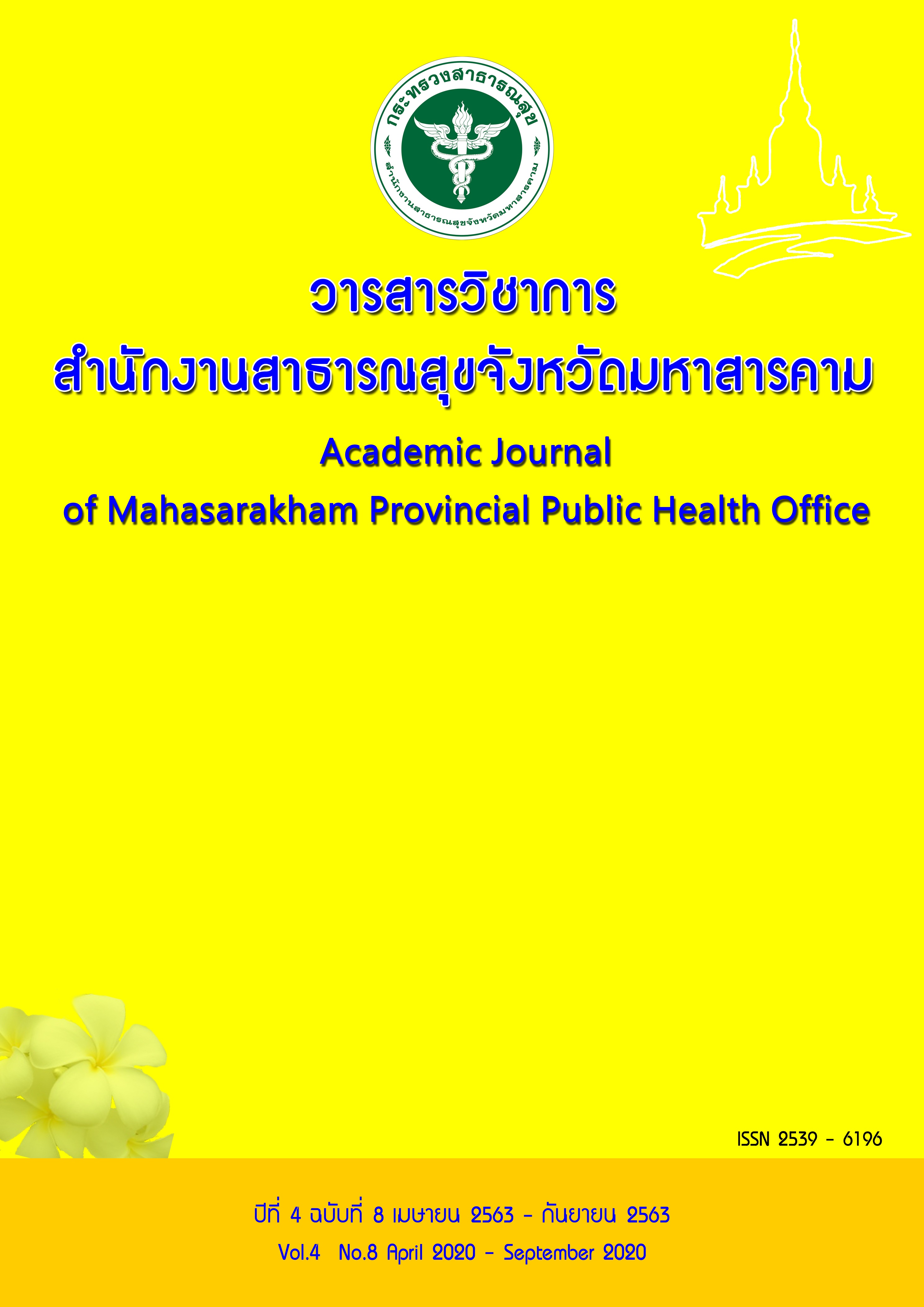The Development of a Care Model for Children withwith Severe Anemia or Transfusion Dependent Thalassemia, Wapi Pathum, Mahasarakham Province
Abstract
Abstract
Thalassemia is a genetic anemia found at birth. The inheritance of abnormal genes from parent to child is classified as a chronic disease that requires lifelong care. This action research aimed 1) to develop a care model for severe thalassemia or blood-dependent anemia. Wapi Pathum Hospital Mahasarakham Province 2) to study the outcome of the development of care for patients with severe thalassemia or blood-dependent anemia, Wapi Pathum Hospital. Mahasarakham Province. The study participants consisted of pediatric patients diagnosed with severe thalassemia anemia. Or blood-dependent types of 46 people who served in Wapiathum Hospital and a group of people involved in the development of a care model for patients with severe hematoma, thalassemia. Or blood-dependent type A specific number of 12 persons was selected. The research consisted of 4 steps: 1) planning, 2) action, 3) observation, and 4) reflection of performance. Research tools include Patient record form Researchers and a multidisciplinary team jointly developed a handbook for the care of pediatric thalassemia patients based on the NHSO Region 7 (specific case services). Care of thalassemia patients), interview form, group discussion, observation, data analysis by number, frequency, percentage, mean and content analysis.
The research results found that the care model for patients with severe thalassemia or blood-dependent anemia consists of 6 elements: 1) a specific thalassemia clinic 2) a screening system 3) a guideline 4) a coordination system 5) a client network consult system and 6) monitoring and evaluation. After the development of a care model for patients with severe thalassemia anemia Or blood-dependent type, the number of diagnosed patients increased from 16 to 30. 86.66 percent of patients tested for iron overload Increased from 18.75 percent to 77.77 percent. Patients were treated with iron in all patients with iron overload. No complications were observed from receiving iron chelators. All patients received standard blood tests. In addition. the number of family members who received additional thalassemia testing increased from 10% to 66.66%
Keywords : Development, Care style , Thalassemia anemia


